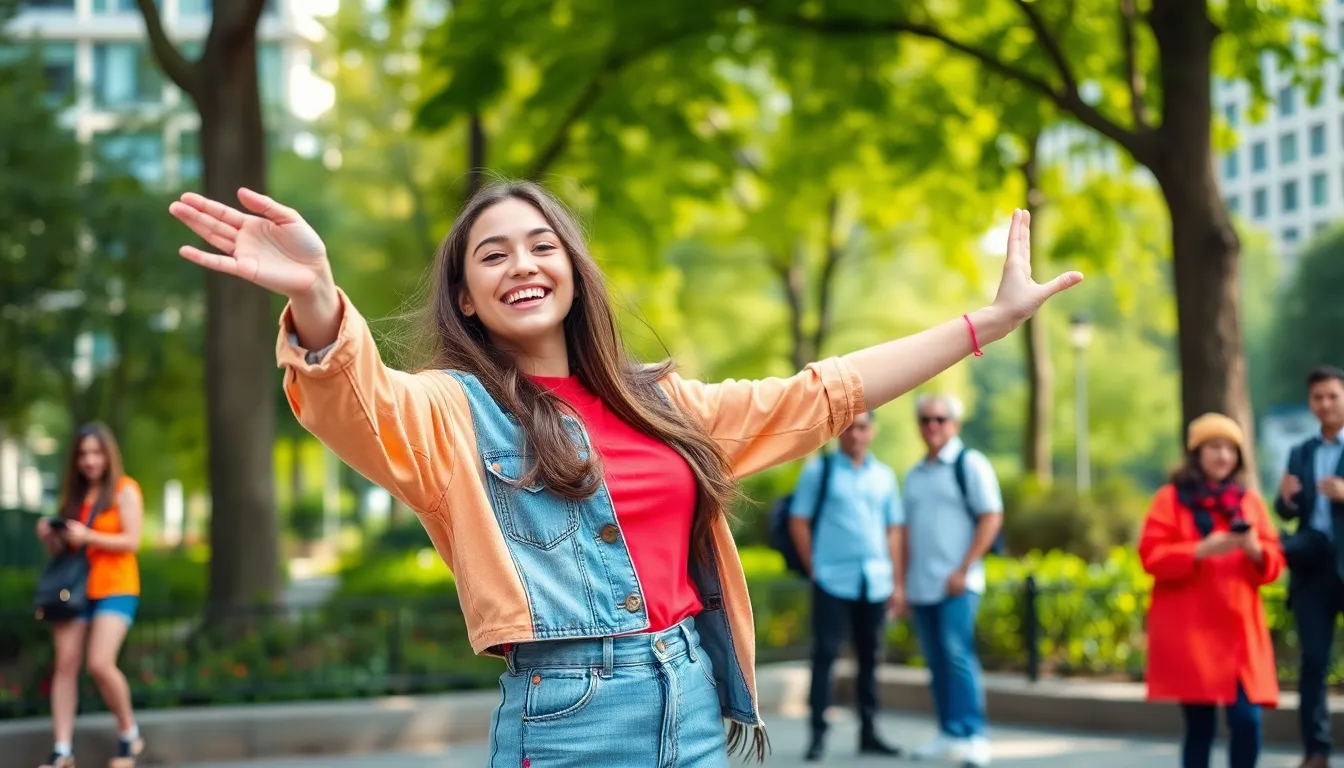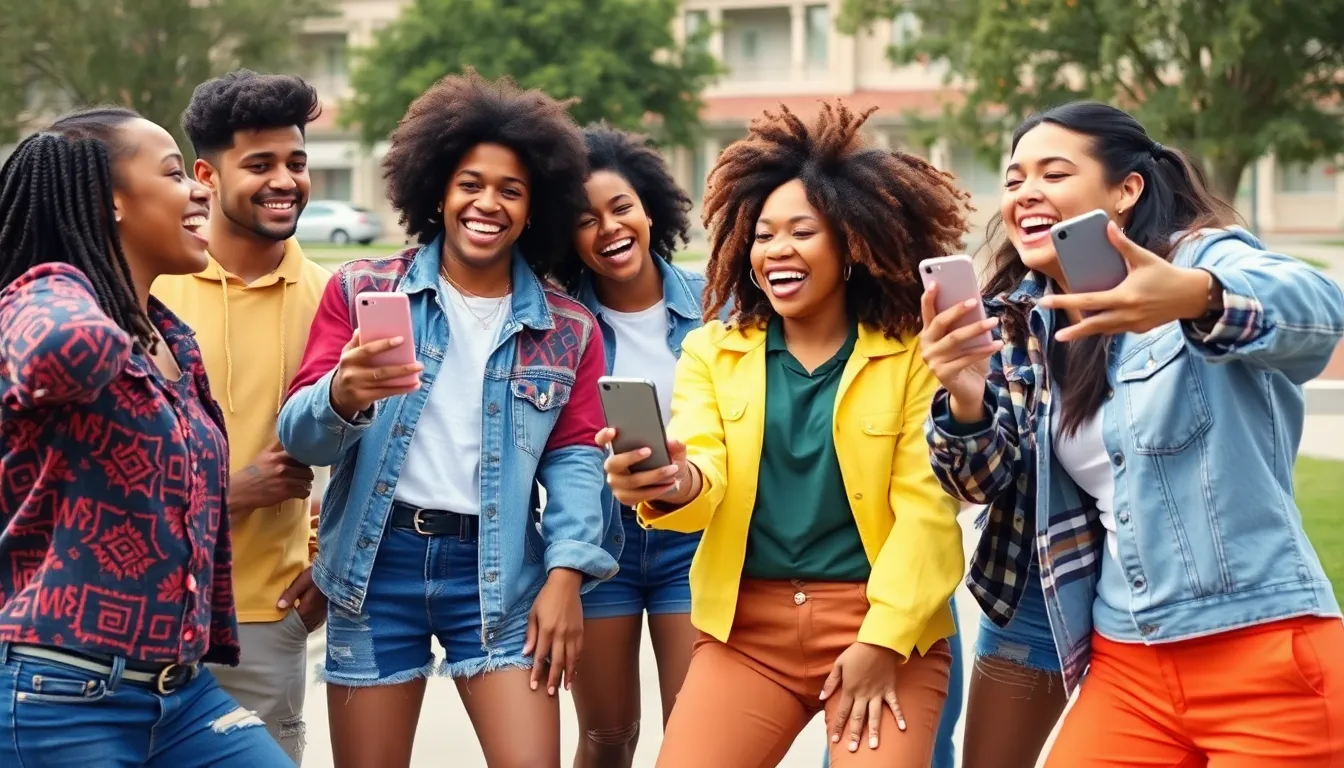Physical Address
304 North Cardinal St.
Dorchester Center, MA 02124
Physical Address
304 North Cardinal St.
Dorchester Center, MA 02124

Pop culture trends are like the latest fashion: they come and go faster than one can say “viral meme.” From TikTok dances that spark global challenges to Netflix shows that keep everyone binge-watching through the night, these trends shape how people connect, communicate, and even shop. It’s a wild ride through the kaleidoscope of creativity, where today’s hit can become tomorrow’s cringe-worthy throwback.
As society evolves, so do its obsessions. Whether it’s the rise of retro aesthetics or the latest celebrity scandal, understanding these trends is crucial for anyone looking to stay relevant in today’s fast-paced world. So grab your popcorn and buckle up, because diving into the whirlwind of pop culture trends is not just entertaining—it’s a fascinating glimpse into the collective psyche of society.
Pop culture trends shift rapidly, reflecting current societal attitudes and behaviors. Influential platforms like TikTok and Netflix set the stage for trends, impacting social interactions and consumption patterns. Viral challenges and streaming sensations often create immediate connections among diverse audiences.
Emerging trends also serve as mirrors, showcasing the collective psyche of different demographics. For instance, dance phenomena on TikTok often stem from popular songs, generating a ripple effect in the music industry. These trends can lead to increased streaming and downloads, demonstrating a direct correlation between pop culture and consumer behavior.
Moreover, memes play a significant role in shaping online conversations. Humor transcends borders, allowing individuals to engage with trends regardless of cultural backgrounds. The versatility of memes enables them to evolve quickly, often repurposing elements from previous trends for new generations.
Fashion trends also reflect changing societal values, with a growing emphasis on sustainability. Brands adopting eco-friendly practices tend to resonate with environmentally aware consumers. This shift impacts purchasing decisions, driving demand for sustainable products that align with consumers’ ethical perspectives.
Events such as award shows influence public sentiment and can catapult lesser-known artists into the spotlight. Recognition in these forums shifts public perception, affecting everything from music charts to mainstream visibility. Ultimately, the landscape of pop culture trends remains dynamic, inviting continual exploration and engagement.

Social media significantly influences pop culture trends, shaping behaviors and spurring virality. Platforms capture attention, allowing trends to spread rapidly across demographics.
Viral challenges often emerge on platforms like TikTok and Instagram. These challenges engage users in collaborative participation, fostering connection among them. Dance challenges such as the “Savage Love” trend gather millions of views, driving user-generated content. Participants share personal interpretations, offering creativity within the framework. As challenges gain momentum, they impact music chart rankings, amplifying the artists’ reach and visibility. Thus, viral challenges serve as catalysts, reflecting engagement with current cultural moments while significantly influencing social interactions and consumer behaviors.
Influencer culture plays a pivotal role in the dissemination of pop culture trends. Influencers leverage their platforms to promote products, showcasing the items that resonate with their followers. They promote trends through genuine, relatable content, bridging brands and audiences effectively. Brands often collaborate with influencers to tap into niche markets, maximizing engagement. Moreover, trends become more authentic through influencer storytelling, leading to increased trust among consumers. Social media thus transforms influencers into vital trendsetters, shaping everything from fashion to lifestyle choices.
Music trends continually transform, driven by technology and audience preferences. The rise of streaming services reshapes how listeners consume music.
Streaming platforms like Spotify, Apple Music, and Amazon Music dominate the music landscape. These services offer a vast library of songs accessible at any time, promoting instant gratification for users. Data shows that in 2023, over 600 million people worldwide subscribed to streaming services, illustrating their influence. Listeners can create personalized playlists, discover new artists, and enjoy curated recommendations. This level of accessibility enhances exposure for emerging musicians and reshapes industry dynamics. Popularity metrics, such as streams and downloads, now dictate chart rankings, shifting focus from traditional sales.
Genre blending evolves musical expression and expands listener preferences. Artists increasingly incorporate elements from various styles, creating unique fusion genres. For example, the rise of pop-rap showcases mainstream artists collaborating with hip-hop figures, reaching wider audiences. The fusion of country and electronic music also gains traction, attracting fans from both genres. According to recent studies, genre-blending tracks experience higher streaming numbers and social media engagement. Such collaborations drive innovation and encourage artists to think beyond conventional boundaries. Audience demand for fresh sounds influences music production, ensuring the ongoing evolution of the musical landscape.
Fashion trends evolve continuously, often reflecting society’s changing values and aesthetics. Each decade brings unique styles that resonate with cultural moments.
Retro revivals consistently dominate fashion, bringing back styles from the past. Designers frequently reintroduce trends like flared jeans, tie-dye shirts, and oversized blazers. The 90s and early 2000s styles have seen significant resurgence in recent years. Popular brands capitalize on nostalgia, tapping into emotional connections with past trends. Celebrities and influencers amplify these revivals, showcasing vintage-inspired outfits on social media. Limited-edition collections resonate strongly with consumers, merging past styles with modern sensibilities. These nostalgic trends evoke sentiments, creating a sense of comfort amidst rapid change.
The sustainable fashion movement has emerged as a powerful response to environmental concerns. Brands increasingly prioritize eco-friendly materials and ethical production practices. Innovative designs often incorporate recycled fabrics and upcycled materials. Consumers show growing interest in transparent supply chains, seeking to understand the origins of their clothing. Secondhand shopping has gained popularity, promoting circular fashion practices. Influencers advocate for sustainable choices, bridging consumers with eco-conscious brands. Events like Fashion Revolution Week raise awareness about labor rights, further influencing brand practices. This movement reshapes the fashion landscape, aligning it more with values of responsibility and longevity.
Current TV shows and movies greatly influence pop culture trends. They shape conversations, connect audiences, and reflect societal values.
Diversity in media representation has seen significant progress. More characters from different backgrounds appear in major productions, promoting inclusivity. Audiences respond positively to stories reflecting varied experiences, highlighting the importance of representation. Examples include shows like “Pose” and “Black Panther,” which celebrate underrepresented communities. These portrayals resonate with viewers, empowering them to see themselves represented on screen. Additionally, Hollywood increasingly embraces authentic storytelling, fostering deeper connections with audiences. Overall, expanded representation drives cultural conversation and enhances viewer engagement.
The rise of streaming platforms has transformed how audiences consume content. Netflix, Amazon Prime Video, and Disney+ lead the competition, each vying for viewer attention. Exclusive releases and family-friendly options attract diverse subscribers, shaping preferences in entertainment. Data indicates Netflix maintained around 231 million subscribers in 2023, showcasing its dominance in the market. Meanwhile, Disney+ gained traction with its catalog of beloved franchises, amassing over 150 million subscribers. The ongoing streaming wars redefine viewing habits, prompting traditional networks to adapt. As competition intensifies, innovation in content development becomes crucial for success.
Pop culture trends are ever-changing reflections of society’s values and interests. They not only shape entertainment but also influence consumer behavior and social connections. As platforms like TikTok and Netflix continue to evolve, they create new avenues for trends to emerge and thrive.
The role of influencers and the impact of social media can’t be understated in this dynamic landscape. Their ability to engage audiences and spark conversations drives trends into the mainstream.
By staying attuned to these shifts, individuals and brands can better navigate the complexities of modern culture. Embracing the fluid nature of pop culture ensures relevance and fosters deeper connections within diverse communities.